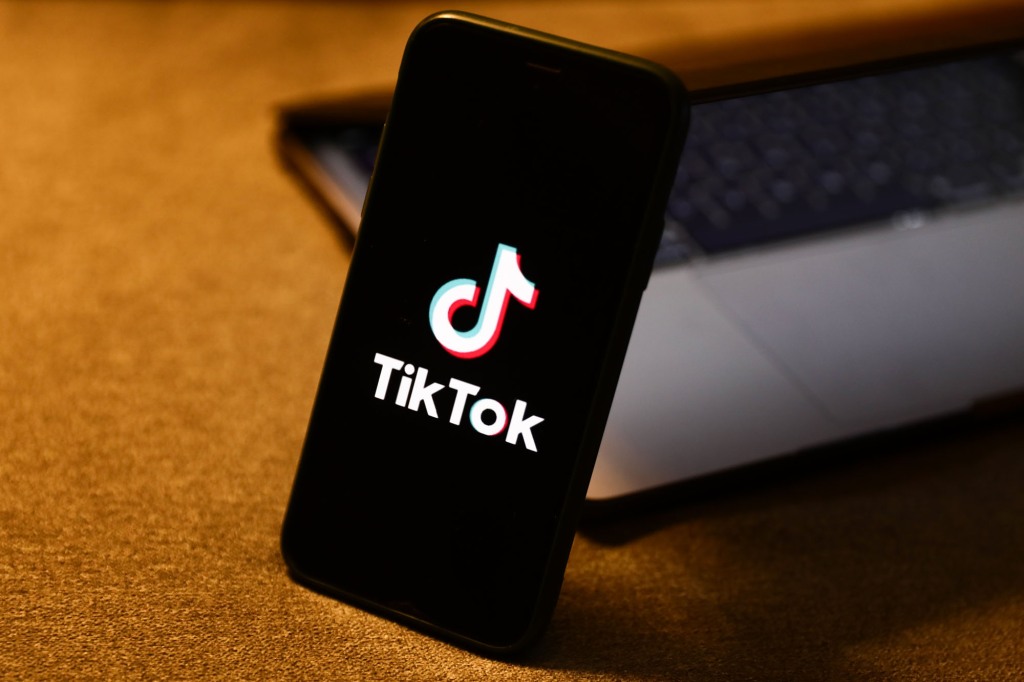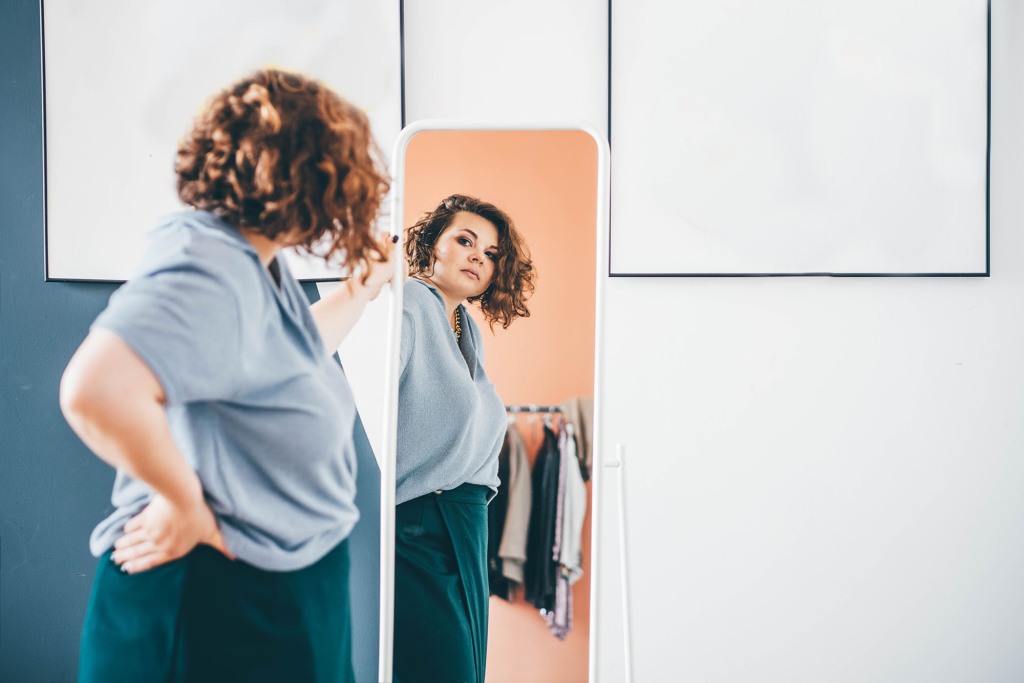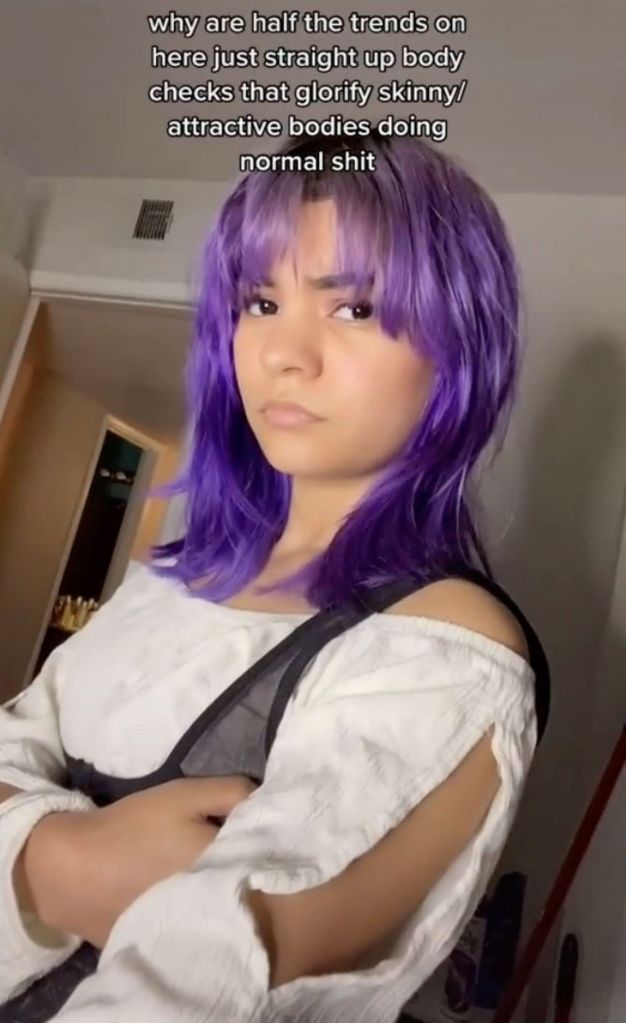New ‘body checking’ TikTok trend is worrying experts
Dozens of TikTok users in recent weeks have reported an unnerving rise in the number of “body checking” videos dominating their For You Pages (FYP).
The latest trend to encourage a hyper-focus on the bodily attributes of (mainly) young women that otherwise wouldn’t be thought twice about.
Body checking is the act of seeking reassurance and information about the size, appearance or look of one’s body or a specific body.
The videos manifest in myriad ways – certain trends and sounds actively encourage TikTok users to disclose their weight and focus on their body shape, while others see people accentuate certain areas of the body using filters and baggy clothing.
Attracting millions of views, they’re often met with comments like “I’m not hungry anymore” or “skipping dinner” – raising the red flag over the platform’s role in perpetuating and spreading pro-anorexia (pro-ana) and disordered eating content.
“Why are half the trends on here just straight-up bodychecks that glorify skinny/attractive bodies doing normal s–t,” one TikTok user, CJ, wrote in a video that’s garnered over 28.2k likes and 228k views.
While it’s “natural” to be aware of our body, head of communications and engagement at The Butterfly Foundation, Melissa Wilton, told news.com.au body checking “can be concerning behavior if it becomes obsessive or compulsive”.
“This could be frequent weighing, checking one’s appearance in a mirror or reflective surfaces like windows, pinching skin folds, feeling for bones, or checking the circumference of body parts like wrists, waists or thighs,” she explained.
“Body checking may also be a problem if it interferes with the individual’s ability to function daily, becomes a way to control fear or anxiety, causes social isolation, brings up negative emotions or leads the individual to engage in disordered eating behaviors in an attempt to change their body.”
Devaney Sparrow, who has more than 80,000 followers on TikTok and has been in recovery from disordered eating for the past few years said they find many videos on the app to be triggering.
“Disordered eating is always lurking in the shadow of your psyche, waiting for the perfect moment to get you,” they told Nylon.

“Videos like these are exactly that perfect moment. When people bodycheck, show how little they eat, or how long and intense their workouts are, it’s extremely harmful.”
Tumblr users during the 2010s will no doubt remember, amid the memes and “artsy” black-and-white photography, the glamorization of disordered eating, prevalence of pro-ana content and disturbing fixation on thigh gaps and collarbones that was rife on the platform.
TikTok, by comparison, officially does not allow videos promoting or glorifying eating disorders. But the nature of pro-ana content is that it’s often hiding in plain sight – insidiously disguised as “thinspo” tips or wellness trends that promote “healthier living”, meaning teenagers may be exposed to it without realizing they’re headed down a dangerous, algorithmic rabbit hole.
Body checking videos on the platform are often not explicitly tagged, so the exact number of them is impossible to calculate – with the likes of #jawlinecheck, #smallwaist and #sideprofile alone drumming up millions of views.
“The main difference is how much more covert TikTok is about it compared to Tumblr,” Sparrow observed.

“It’s all disguised as wellness or being healthy. It’s much more difficult to differentiate what’s taking care of my body and what’s my eating disorder trying to creep back into my world.”
Ms. Wilton agreed, acknowledging that “while the landscape has certainly evolved from the overt ‘pro-eating disorder’ movements seen on Tumblr …[the body checking trend] can still be a warning sign of a body image concern or can lead to disordered eating in vulnerable people”.
“Content also often reinforces unattainable beauty and appearance ideals, and this can be seen explicitly within the body checking trend,” she added.
“When these videos become popular on social media, it also sends the message that our appearance is the most valuable thing about us.
“They can also serve as body ‘inspiration’ or incite comparison and shame among users, if their body shape is not one that is actively praised.”
The fact that TikTok is best known as the social platform for young people – with around 60 percent of its users from Generation Z – makes the issue of any content that promotes disordered eating particularly alarming.

It appears to be more than coincidental that, as the number of time teens spend online has increased, so too has the rate of eating disorders; approximately one million Australians are living with an eating disorder in any given year, equating to four percent of the population.
“Ultimately, social media has provided a platform for these issues to play out online, 24/7, and social media organizations do have a level of responsibility to keep users safe and protected from unhelpful content that may contribute to negative body image or an eating disorder,” Ms. Wilton said.
But, “to ensure these trends and issues disappear offline, we first need to counteract them in broader society”.
“Weight stigma, fatphobia, appearance-based teasing, and diet culture all exist offline, and did so before social media,” she said.
“Until we counteract these issues broadly in society, it is likely that we will continue to see them play out online.”
We’re in it for the long haul with the likes of TikTok, Ms. Wilton said, “so it’s imperative individuals are equipped with strong social media literacy skills to be able to navigate these platforms in a positive way”.
“Comparing yourself to the idealized and unattainable body types in many of these videos can leave the individual feeling guilty or ashamed that their own body doesn’t match up,” she said.
“Recognizing that much of the content shared on social media is a carefully curated and edited ‘highlight reel’, and not a true depiction of someone’s everyday reality, can be helpful.”
Ms. Wilton also suggested diversifying your social media feed “to be inclusive of bodies of all shapes and sizes”, and to make use of the ‘mute’, ‘block’ or ‘report’ buttons “if content is distressing, triggering or brings up negative emotions”.
“If someone is finding themselves ‘body checking’ more often, if they’re unable to stop the behavior, or if they are feeling preoccupied with their relationship to their appearance, food or exercise, it is critical to seek professional support as soon as you think something might be wrong.”
Read the full article Here


